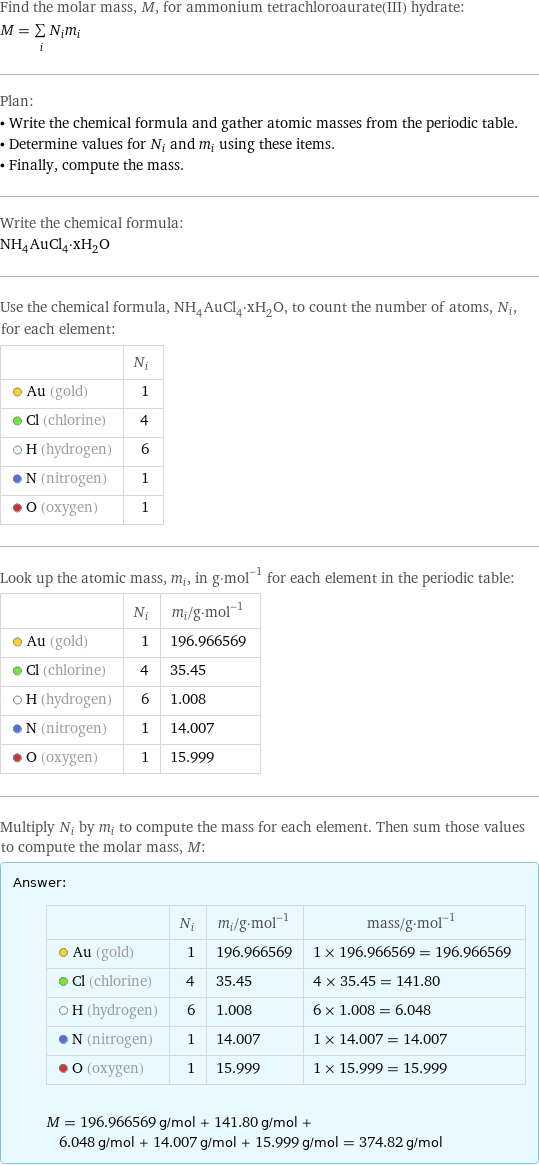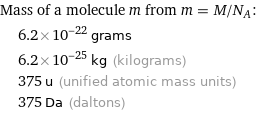Input interpretation

ammonium tetrachloroaurate(III) hydrate | molar mass
Result

Find the molar mass, M, for ammonium tetrachloroaurate(III) hydrate: M = sum _iN_im_i Plan: • Write the chemical formula and gather atomic masses from the periodic table. • Determine values for N_i and m_i using these items. • Finally, compute the mass. Write the chemical formula: NH_4AuCl_4·xH_2O Use the chemical formula, NH_4AuCl_4·xH_2O, to count the number of atoms, N_i, for each element: | N_i Au (gold) | 1 Cl (chlorine) | 4 H (hydrogen) | 6 N (nitrogen) | 1 O (oxygen) | 1 Look up the atomic mass, m_i, in g·mol^(-1) for each element in the periodic table: | N_i | m_i/g·mol^(-1) Au (gold) | 1 | 196.966569 Cl (chlorine) | 4 | 35.45 H (hydrogen) | 6 | 1.008 N (nitrogen) | 1 | 14.007 O (oxygen) | 1 | 15.999 Multiply N_i by m_i to compute the mass for each element. Then sum those values to compute the molar mass, M: Answer: | | | N_i | m_i/g·mol^(-1) | mass/g·mol^(-1) Au (gold) | 1 | 196.966569 | 1 × 196.966569 = 196.966569 Cl (chlorine) | 4 | 35.45 | 4 × 35.45 = 141.80 H (hydrogen) | 6 | 1.008 | 6 × 1.008 = 6.048 N (nitrogen) | 1 | 14.007 | 1 × 14.007 = 14.007 O (oxygen) | 1 | 15.999 | 1 × 15.999 = 15.999 M = 196.966569 g/mol + 141.80 g/mol + 6.048 g/mol + 14.007 g/mol + 15.999 g/mol = 374.82 g/mol
Unit conversion

0.3748 kg/mol (kilograms per mole)
Comparisons

≈ 0.52 × molar mass of fullerene ( ≈ 721 g/mol )

≈ 1.9 × molar mass of caffeine ( ≈ 194 g/mol )

≈ 6.4 × molar mass of sodium chloride ( ≈ 58 g/mol )
Corresponding quantities

Mass of a molecule m from m = M/N_A: | 6.2×10^-22 grams | 6.2×10^-25 kg (kilograms) | 375 u (unified atomic mass units) | 375 Da (daltons)

Relative molecular mass M_r from M_r = M_u/M: | 375